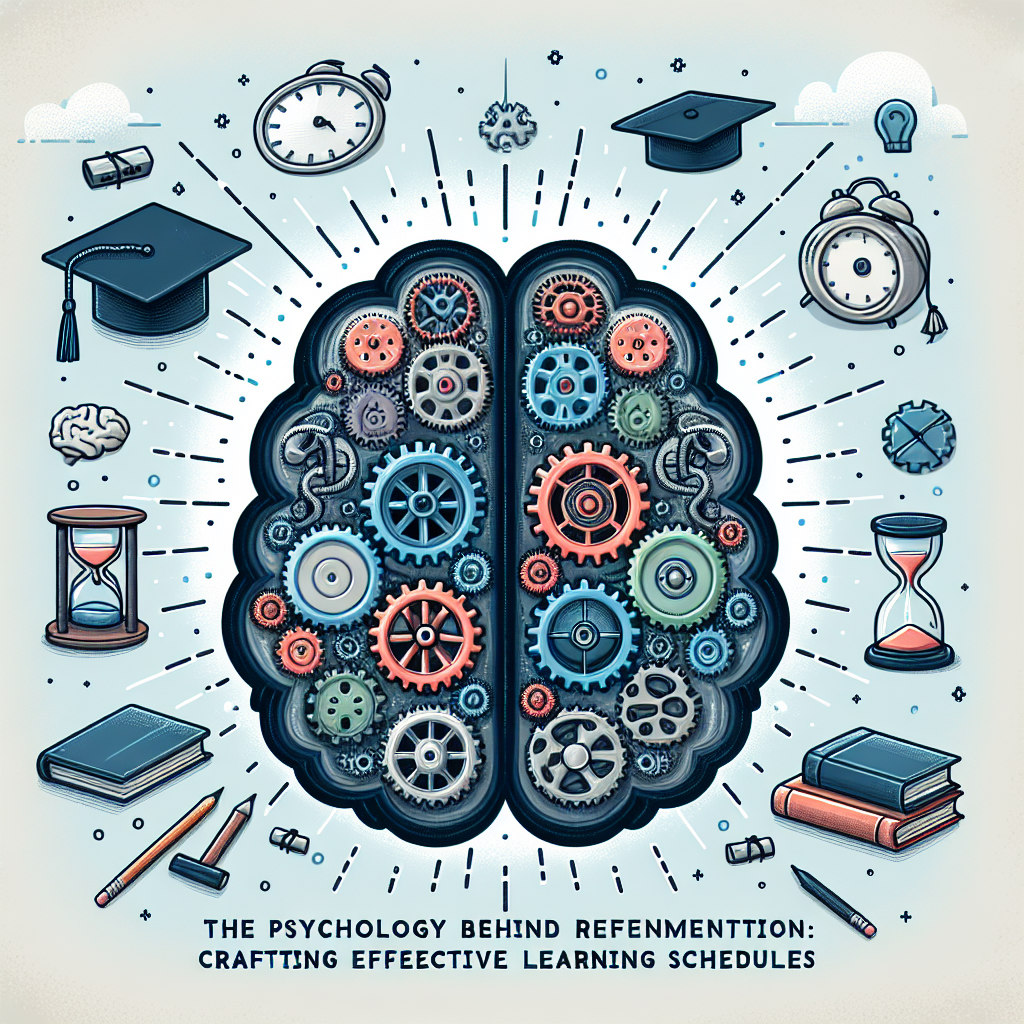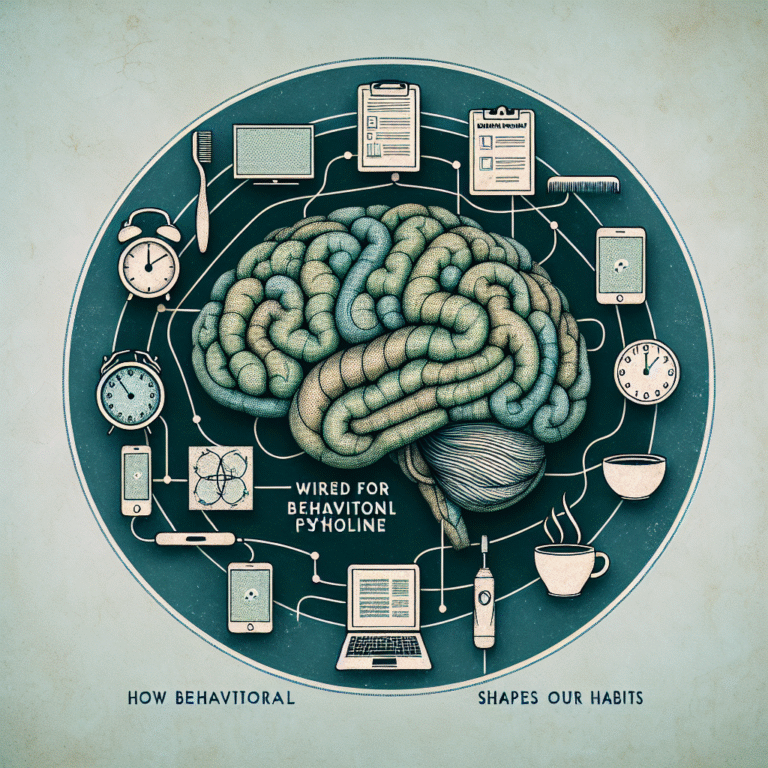
In today’s rapidly evolving world, the approach to learning has seen transformative shifts. The emphasis on efficiency and effectiveness is paramount, especially in an era saturated with information. The Psychology Behind Reinforcement: Crafting Effective Learning Schedules emerges as a guiding principle, directing educators, trainers, and students towards optimized learning experiences. This article delves into the insightful realms of reinforcement psychology and illustrates how structured learning schedules can lead to superior retention and mastery of skills.
Understanding Reinforcement: The Psychological Foundations
What is Reinforcement?
Reinforcement, rooted in behavioral psychology, refers to any consequence that strengthens an individual’s behavior. Think of it as a reward mechanism that encourages repeat actions. As B.F. Skinner famously suggested, behavior that is positively reinforced is more likely to recur. This principle forms the cornerstone of effective learning strategies.
Types of Reinforcement
-
Positive Reinforcement:
- This involves presenting a motivating item or stimulus after a desired behavior is exhibited, making the behavior more likely to happen.
- Example: Offering praise or rewards for achieving specific learning milestones.
-
Negative Reinforcement:
- The removal of an unfavorable outcome or stimulus after a desired behavior is exhibited.
- Example: Eliminating homework after a student consistently completes assignments on time.
- Punishment:
- While not always desired in learning environments, it involves presenting an unfavorable outcome following an undesired behavior.
- Example: Losing privileges for failing to meet deadlines.
Case Study: Positive Reinforcement in Educational Settings
Consider the case of a middle school implementing a positive reinforcement schedule. Students received points for completing assignments, participating in discussions, and helping peers. The incentive of redeeming these points for rewards not only boosted engagement but also fostered a positive learning environment. Upon analysis, the school observed a marked improvement in student grades and participation levels, underscoring the essential role of reinforcement in crafting successful learning schedules.
The Science of Crafting Effective Learning Schedules
What Makes a Learning Schedule Effective?
An effective learning schedule considers the cognitive load, the timing of learning sessions, and the principle of spaced repetition. Understanding The Psychology Behind Reinforcement: Crafting Effective Learning Schedules involves recognizing these components.
Spaced Repetition and its Impact
Spaced repetition capitalizes on the brain’s ability to consolidate short-term memories into long-term knowledge. Research indicates that spacing out learning sessions enhances retention rates. This contrasts with cramming, where information is often quickly forgotten.
Table: Spaced Repetition vs. Cramming
| Learning Method | Retention Rate (%) | Recommended Schedule |
|---|---|---|
| Spaced Repetition | 80% | 15 min daily for 2 weeks |
| Cramming | 35% | 3 hours before exam |
Incorporating Temporal Factors
Timing is crucial in reinforcement. The delay between behavior (e.g., studying) and reward (e.g., grades or praise) can vary:
- Immediate Reinforcement: Best for tasks requiring quick feedback, such as language learning.
- Delayed Reinforcement: More effective for complex tasks requiring sustained effort over time.
Case Study: The Effect of Timing on Retention
At a university, a professor restructured their course schedule to incorporate immediate feedback loops after each lecture. Students engaged in regular quizzes that offered instant scores and feedback. The outcome? All students reported increased retention of material, validating the significance of timing in The Psychology Behind Reinforcement: Crafting Effective Learning Schedules.
Designing Learning Schedules Based on Reinforcement Principles
Step 1: Identify Learning Goals
Before crafting a schedule, clarify what you or your students aim to achieve. Specific, measurable goals can guide the reinforcement method used.
Step 2: Choose the Right Type of Reinforcement
Select the reinforcement types based on learning objectives. For example, positive reinforcement may suit motivational learning environments, while negative reinforcement may be appropriate for behavioral modifications.
Step 3: Implementing a Schedule
Create a structured learning schedule that includes:
- Daily Study Times: Short, focused sessions with breaks in between.
- Incorporation of Review Sessions: Utilize spaced repetition by revisiting topics after intervals.
Example Schedule
| Day | Activity | Reinforcement |
|---|---|---|
| Monday | Study Math Concepts | Praise & small rewards |
| Tuesday | Revise Math Concepts (Spaced) | Treat for completion |
| Wednesday | Engage in group study | Extra points for participation |
| Thursday | Quiz on Math Concepts | Immediate feedback |
| Friday | Reflect on week’s learning | Group celebration |
Step 4: Evaluate and Adjust
Regularly assess the effectiveness of the schedule. Are students responding well to reinforcements? Is retention improving? Adjustments may be necessary to optimize schedules continually.
The Role of Technology in Reinforcement
Digital Learning Platforms
With the rise of e-learning tools, technology facilitates reinforcement through gamified experiences. Platforms that integrate point systems, badges, and leaderboards effectively enhance motivation and engagement among learners.
The Case of Duolingo
Duolingo uses gamification to reinforce language learning. Users earn points, level up, and unlock achievements, creating a self-sustaining cycle of motivation. Studies show that this results in higher engagement rates and a greater likelihood of achieving language proficiency.
Challenges in Implementing Reinforcement Techniques
While reinforcement is vital for learning, it presents certain challenges:
Over-Reliance on External Rewards
Students might become reliant on rewards, undermining intrinsic motivation. Strategies to mitigate this include gradually reducing external rewards to encourage intrinsic satisfaction from learning.
Fatigue from Reinforcement
Too frequent reinforcement can lead to desensitization. Finding a balance in timing and frequency is crucial for sustained engagement and effectiveness.
Conclusion: Empowering Learners Through Reinforcement
The Psychology Behind Reinforcement: Crafting Effective Learning Schedules is a powerful strategy for enhancing educational experiences. By understanding the nuances of reinforcement—be it through positive or negative means—educators and learners can create environments conducive to mastery and retention. The fusion of psychology with structured learning schedules presents a profound opportunity to harness human potential.
FAQs
1. What is reinforcement learning?
Reinforcement learning refers to the process of using rewards and punishments to shape desired behaviors. In educational settings, this involves using techniques that promote learning through positive feedback and rewards.
2. How often should I use reinforcement in a learning schedule?
The frequency of reinforcement depends on the learning objectives. Regular reinforcement is beneficial initially, but it’s essential to gradually reduce reliance on rewards to foster intrinsic motivation.
3. Can reinforcement lead to negative outcomes?
Yes, excessive reliance on external rewards can undermine intrinsic motivation. It’s vital to strike a balance to ensure learners remain engaged for the sake of learning itself.
4. How can technology aid reinforcement strategies?
Many educational technologies incorporate gamification and feedback mechanisms to deliver reinforcement effectively. These tools can motivate learners through interactive experiences.
5. How can I evaluate the effectiveness of a learning schedule?
Monitor student engagement, retention rates, and performance metrics to assess the impact of the learning schedule. Regular feedback from learners can also provide insights into the schedule’s effectiveness.
Incorporating The Psychology Behind Reinforcement: Crafting Effective Learning Schedules into educational paradigms equips learners with the tools to succeed in an increasingly complex world. Embrace these strategies today, and watch as knowledge flourishes and leads to mastery.

















